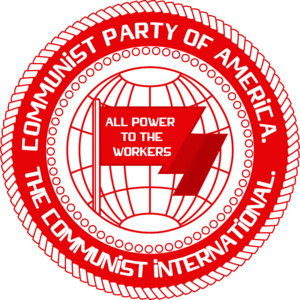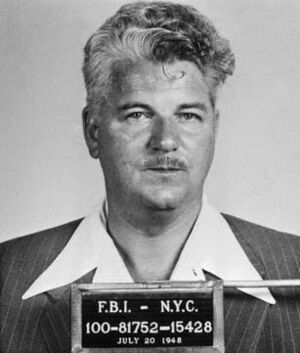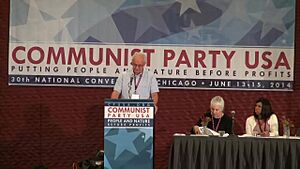History of the Communist Party USA facts for kids
The Communist Party USA (CPUSA) is an American political party that follows communist ideas. It was started in 1919 in Chicago, Illinois. The party has a long history connected to the American labor movement. It helped workers form unions and led many strikes. Later, it was also involved in civil rights and anti-war movements.
Many party members had to work secretly because of strong opposition against communists in the United States. The CPUSA faced many challenges. They went through two periods known as the Red Scare, when people were very afraid of communism. The party never won many elections. However, it was the most well-known leftist party in the United States. The CPUSA also had close ties with the Soviet Union and received money from them.
The CPUSA had the most members in the late 1940s, with over 75,000 in 1947. Their influence was even bigger than their membership numbers. Some candidates in national elections received over 100,000 votes. But the number of members started to drop in the late 1940s and 1950s. This was likely because of the Red Scare, when the U.S. government put communists and CPUSA members on trial. When the dissolution of the Soviet Union happened, the CPUSA lost its main source of money.
The Communist Party USA still exists today. Its members and activities have mostly moved online. Even with many challenges, including a big split in the 1990s, the party has not reached its past size or influence.
Contents
History of the Communist Party USA
Early Years: How the Party Started
The first socialist political party in the U.S. was the Socialist Labor Party of America (SLP), formed in 1876. Later, some members disagreed with its leader and formed the Socialist Party of America (SPA) around 1900. A group within the SPA, called the Left Wing, wanted to join the Communist International (Comintern), a global communist organization. In 1919, the Left Wing won many internal elections, but the SPA leaders canceled the results. This led to different groups leaving to form a new Communist Party.
In September 1919, one group formed the Communist Party of America. Another group, led by John Reed, formed the Communist Labor Party. The Comintern wanted these two parties to merge. After some time, they finally joined together in May 1921. Many of the new party's members were immigrants, and some came from the Industrial Workers of the World (IWW) union.
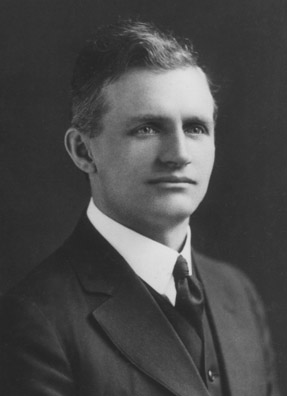
Facing Challenges: The Red Scare
From the very beginning, the Communist Party USA (CPUSA) faced attacks from the government. In 1919, after some bombings, the Department of Justice started arresting thousands of foreign-born party members. Many were sent out of the country. The Communist Party had to go underground, using secret meetings and fake names to avoid being caught.

The party later became a legal political party in late 1921, called the Workers Party of America (WPA). As the Red Scare faded, the party became more open. However, a secret part of the party always remained hidden. Many early members were immigrants from Eastern Europe.
Working for Change: Labor and Civil Rights
Once the party became legal, its main goal was to connect with working-class people. They shifted from hoping for a quick revolution to a more gradual approach. This change was influenced by decisions made by the Comintern in 1925. The Comintern decided that capitalism was stable, and revolutionary attempts should stop for a while. American communists then focused on finding allies.
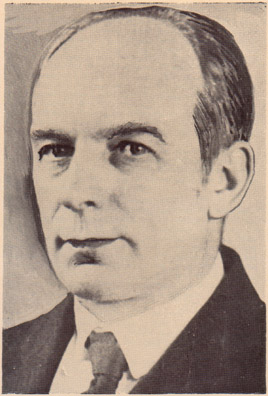
The party faced internal disagreements among its leaders. One group was led by C. E. Ruthenberg, and another by William Z. Foster and James P. Cannon. Foster had strong ties with labor leaders. In 1925, the Comintern told Foster's group to let Ruthenberg's group take control, which Foster did. However, disagreements continued.
In 1928, the Communist Party USA nominated William Z. Foster for president. They knew they wouldn't win, but they wanted to raise awareness about class issues. They received over 48,000 votes.
During the Great Depression, many Americans were unhappy with capitalism. Some liked communist ideas, and others were drawn to the party's activism. The CPUSA worked to help the unemployed, fight evictions, and support the rights of African Americans. They also recruited members from the African Blood Brotherhood, a group of African American socialists.
In 1928, the CPUSA called for self-determination for African Americans in the southern United States. This meant they believed Black people in the South should have the right to govern themselves. The party helped create the Alabama Sharecroppers Union in the 1930s. In 1935, this union, with 12,000 members, went on strike in Alabama. They demanded higher wages and succeeded in many places. The CPUSA's work in Alabama helped prepare the way for the later civil rights movement. By supporting self-determination and fighting segregation, the party became an interracial group that stood against racial injustice.
World War II and Its Impact
In 1932, Earl Browder became the General Secretary of the Communist Party. He moved the party closer to Soviet interests. During the Great Depression, the party's membership grew from 6,822 to 66,000. Many Americans were worried about the rise of fascism in Spain and Nazis in Germany. They admired the Soviet Union's strong opposition to fascism.
From 1935 to 1939, the party followed a policy called the "popular front". This meant they worked with all groups that were against fascism. The Communist Party stopped opposing President Franklin D. Roosevelt's New Deal programs. They helped organize the Congress of Industrial Organizations (CIO) and supported African American civil rights. They also supported the Spanish Republic during the Spanish Civil War. Many members joined the Lincoln Brigade to fight in Spain. This brigade was notable for being the first American military group to have Black and white members serving together equally.
However, the party under Browder also supported Joseph Stalin's show trials in the Soviet Union. These trials led to the deaths of millions of people. Browder defended Stalin's actions, calling them a "signal service to the cause of progressive humanity."
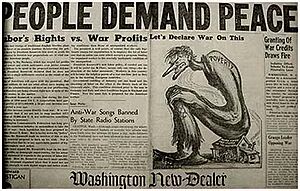
The Communist Party strongly opposed fascism during the Popular Front. But when the Soviet Union signed a non-aggression pact with Nazi Germany in August 1939, nearly 20,000 members left the party. The party then changed its focus from anti-fascism to promoting peace and opposing military preparations. They even criticized President Roosevelt for a time.
When the Soviet Union was invaded by Germany in 1941, the Communist Party changed its stance again. They became strong supporters of the war effort. They opposed strikes and supported the government's actions against other socialist groups. The U.S. government also eased restrictions on the CPUSA to maintain good relations with the Soviet Union during the war.

After the war, Earl Browder expected a long period of peace between the Soviet Union and the West. He even dissolved the party in 1944, replacing it with a Communist Political Association. But this harmony didn't last. The international communist movement shifted left, and Browder was criticized. He was replaced by William Z. Foster in 1945.
The Cold War and New Challenges
The start of the Cold War in the late 1940s brought new government attacks on the Communist Party. The government started loyalty programs, trying to remove communists from jobs. The House Un-American Activities Committee (HUAC) investigated people with communist ties. This led to the Hollywood blacklist, where actors and writers were banned from working if they were thought to be communists. Unions also removed party members.
In 1949, eleven CPUSA leaders, including Gus Hall and Eugene Dennis, were put on trial. The government said they planned to violently overthrow the government, which was against the Smith Act. The defendants said they wanted a peaceful change to socialism and that their free speech rights protected them. The trial was widely covered by the media. The jury found all 11 defendants guilty, and they were sent to prison. The U.S. Supreme Court upheld the ruling in 1951. The government then arrested and convicted over 100 more party officers.
Fear of communism grew even more after the Soviets developed an atomic bomb in 1949. Politicians like Richard Nixon and Joseph McCarthy became famous by exposing or threatening to expose communists. In 1954, Congress passed the Communist Control Act of 1954, which tried to outlaw the Communist Party. However, this law was mostly ineffective. By the mid-1950s, CPUSA membership had dropped from 75,000 to about 5,000. Many of these "members" were actually FBI informants.
After the Soviet Union: A New Path
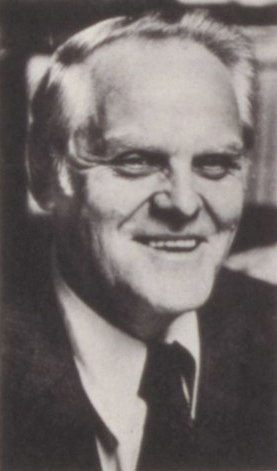
The Soviet invasion of Hungary in 1956 and a speech by Nikita Khrushchev revealing Stalin's crimes greatly affected the party. Membership dropped sharply. The party's newspaper, the Daily Worker, stopped publishing in 1958 due to low circulation. Many critics left the party, but some continued to work for progressive causes.
A new leader, Gus Hall, took over. He made sure the party followed the official Soviet line very strictly. However, high-profile leaders like Angela Davis helped the party regain some national attention. By the 1970s, membership grew to about 25,000. Many members held important positions in the Civil Rights, anti-war, and labor movements.
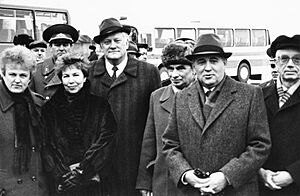
When Mikhail Gorbachev became the leader of the Soviet Union, he brought big changes. At first, American communists welcomed his reforms. But as reforms continued, party leader Gus Hall criticized them, saying they were bringing back capitalism. This ended the relationship between the two communist parties.
When the dissolution of the Soviet Union happened, the CPUSA lost its funding. This caused a financial crisis. The party's newspaper, the People's Daily World, became a weekly paper. The party also faced a crisis of ideas. More moderate members, including Angela Davis, left the party to form a new group. They felt the party was too closed off and slow to change.
The Party Today: Online and Local
After Gus Hall's death in 2000, Sam Webb became the chairman. Under his leadership, the party's main goal became supporting the Democratic Party in elections. This was to defeat the "ultra right" political groups. The CPUSA even supported the election of Barack Obama in 2008.
Sam Webb later said that Marxism–Leninism was "too rigid." He suggested moving "beyond Communist Parties." This was criticized by many as being anti-communist. Webb stepped down in 2014 and was replaced by John Bachtell. Webb later left the party.
The CPUSA lost many members in the 21st century. From 2005 to 2010, they lost over half of their active members. In 2007, the party donated its large collection of historical documents to New York University. This included 12,000 boxes of materials, 20,000 books, and a million photos.
The CPUSA no longer runs candidates under its own name in major elections. However, they do run occasional candidates as independents or Democrats. In 2009, Rick Nagin almost won a city council seat in Cleveland. In 2019, Wahsayah Whitebird, a CPUSA member, won a seat on the city council in Ashland, Wisconsin. In 2021, the party said it was time to start running explicitly communist candidates in local elections again.
Estimating current membership is hard. Some sources say there are 5,000 active members. However, during the Trump era, membership increased. Estimates now suggest up to 8,000 members, including the newly reformed Young Communist League.
During the 2020 election, the CPUSA published articles supporting Joe Biden and strongly opposing Donald Trump. After the January 6 Capitol Riot, the party called for Donald Trump to be removed from office. A growing youth group within the party played a big role in Black Lives Matter protests and in fighting to save Public Housing.
See also
- Communist Party USA and African Americans
- Rummagers League


